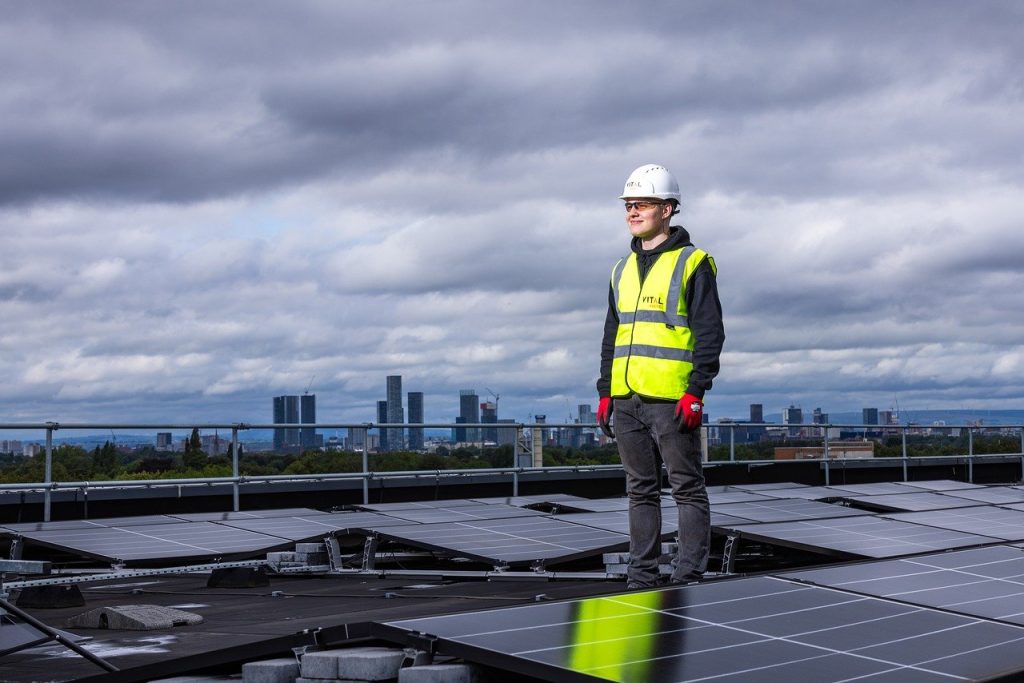Installing solar panels benefits the environment and can reduce homeowners’ energy bills. Currently, about 4% to 6% of U.S. homes use residential solar panels for some or all of their energy needs, and this number is gradually increasing each year.
Despite these benefits, solar panels are not yet widespread due to the high initial investment, which can be a barrier for many people. However, given the potential energy cost savings, it is worth considering the financial planning necessary for solar installation.
Solar Energy vs. Conventional Power
Whether you aim to reduce your electric bill or explore solar energy as an eco-friendly home power option, solar power offers significant advantages for homeowners.
Unlike traditional energy sources such as gas and coal, solar power is clean and renewable. Solar panels capture energy from the sun and convert it into electricity for home use. Since the sun continuously provides energy, a solar energy system delivers a sustainable energy supply.
Conversely, other energy sources rely on fossil fuels, which are finite and require environmentally harmful extraction methods. Solar energy, which does not involve drilling or other hazardous extraction methods, is considered a clean energy source.
However, solar energy’s reliability can vary compared to traditional energy forms, as the sun’s intensity fluctuates throughout the day and across different weather conditions. For instance, homeowners might experience solar energy shortages during extended cloudy periods.
How Much Can You Save with Solar Panels?
Before investing in solar panels, it’s common to wonder:
- How much can solar panels generally save on electricity?
- What are the monthly savings with solar panels?
- What are the annual savings with solar panels?
The savings can vary depending on the size of your solar installation, your average electricity costs, and the electricity rates in your area.
On average, homeowners can save about $1,785 per year—nearly $150 a month—by switching to solar energy.
This estimate is based on the average U.S. electricity rate of around $0.17 per kWh and the typical household’s annual electricity consumption of approximately 10,500 kWh. Therefore, an average household spends about $1,785 annually on electricity, which could be eliminated by using solar power.
However, these savings depend on having a solar panel system large enough to meet all your energy needs. If your system only covers half of your energy costs, you could still save around $75 per month on average.
To determine if your system can handle your energy requirements, you can use the Global Solar Atlas. This tool provides data on solar potential worldwide.
Start by entering your location; for example, Raleigh, North Carolina. You will see a data point labeled “Specific Photovoltaic Power Output.” In Raleigh, this value is 1,536, which means that residents can receive this amount of solar power per kW of installed solar panels.
To cover the average household’s 10,500 kWh annual electricity use, you would need to install a 7 kW solar system. This size of the system would ideally cover your entire electricity bill and maximize your savings.
Factors to Consider for Solar Savings
When evaluating “How much do solar panels save?”, it’s important to remember that the savings can vary from person to person. As mentioned, your electricity usage and the electricity rates in your area play significant roles in determining your potential savings. Additionally, the quality of your solar panel system is crucial; opting for a lower-quality system might save you money initially but could lead to lower efficiency and reduced savings over time.
Furthermore, like many home components, solar panels can experience wear and tear. Investing in high-quality panels from the start is a good strategy for ensuring a longer lifespan, but even the best panels will degrade over time. Experts generally agree that most solar panels degrade by approximately 0.1% to 1% in performance each year. Consequently, after 10 years, some systems might only provide about 90% of their original output, which could ultimately reduce your overall savings.
When You Can Start Seeing Savings
After installing solar panels, you’ll start seeing savings as soon as you stop paying your electric bill, which could happen within one to two months of the installation. However, if you invest around $15,000 in your solar panel system, it might take several years before you see a return on that investment. With an average annual savings of $1,785 on electricity, it will take approximately 8.5 years for your savings to match the cost of your solar panel installation.
Average Costs for Installing Solar Panels
While solar panels can save many homeowners money on their electric bills over time, the initial cost of installation is quite high. The expenses for going solar depend on your location, and different solar companies have varying prices for their services. Understanding these costs can help you decide if investing in solar panels is right for you. On average, the total cost for a solar panel system, including both equipment and installation, ranges from $15,000 to $25,000. Factors such as the size of your home, the quality of the equipment, and potential system upgrades can influence the price, with some high-end systems costing more than $30,000.
The good news is that once installed, solar panels typically require little maintenance for several years, and a well-made system can often last up to 30 years.


